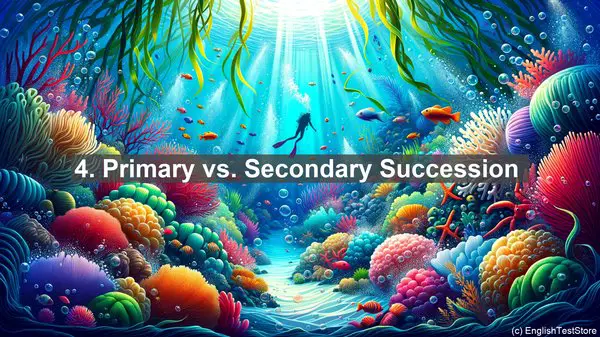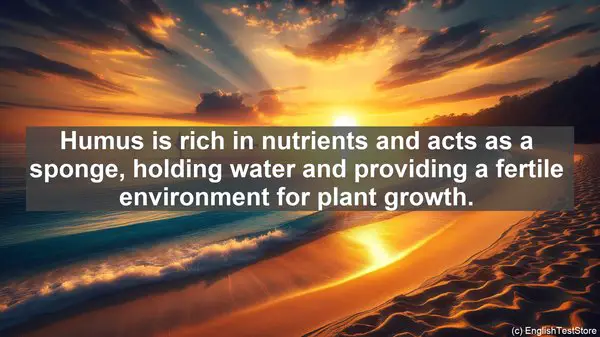Introduction
Today, we’re going to dive into the fascinating world of forest ecology. As you explore this field, you may come across certain words that seem similar but have distinct meanings. Understanding these differences is crucial for accurate communication and comprehension. In this lesson, we’ll discuss the top 10 commonly confused words in forest ecology. So, let’s get started!
1. Ecosystem vs. Habitat
While both terms refer to a specific environment, they have different scopes. An ecosystem encompasses all living organisms and their interactions with the non-living components, such as soil and climate. On the other hand, a habitat is the specific place where a particular organism lives. Think of it this way: an ecosystem is like a big, interconnected web, while a habitat is a smaller, localized area within that web.

2. Deciduous vs. Coniferous
When it comes to trees, these terms are often mixed up. Deciduous trees shed their leaves annually, usually during the fall, while coniferous trees have needle-like leaves and bear cones. So, if you see a tree with vibrant, changing foliage, it’s likely deciduous, while a tree with evergreen needles is probably coniferous.
3. Biodiversity vs. Species Richness
Biodiversity refers to the variety of life forms in a given area, including plants, animals, and microorganisms. It encompasses not just the number of species but also their genetic diversity and the different ecosystems they inhabit. On the other hand, species richness simply refers to the number of different species in a particular location. So, while species richness is a part of biodiversity, it doesn’t capture its full complexity.
4. Primary vs. Secondary Succession
Both terms describe the process of ecological change over time. Primary succession occurs in an entirely new or previously barren area, such as a volcanic island. It starts from scratch, with pioneer species like lichens and mosses gradually creating soil and paving the way for more complex vegetation. Secondary succession, on the other hand, happens in an area that has experienced a disturbance, like a forest fire. Here, the process builds upon the existing soil and seed bank, leading to a faster recovery.
5. Keystone Species vs. Indicator Species
These terms relate to the roles species play in an ecosystem. A keystone species has a disproportionately large impact on its environment, often influencing the presence of other species. Removing a keystone species can cause significant disruptions. On the other hand, an indicator species is used as a gauge of environmental conditions. Its presence or absence can indicate the health of an ecosystem. So, while keystone species are ecosystem engineers, indicator species are more like environmental detectives.
6. Canopy vs. Understory
In a forest, different layers of vegetation exist. The canopy refers to the uppermost layer, composed of the tallest trees that form a continuous cover. It receives the most sunlight and is home to various birds and mammals. The understory, as the name suggests, is the layer beneath the canopy. It consists of smaller trees, shrubs, and herbaceous plants. Each layer has its own unique set of species and plays a vital role in the overall forest ecosystem.
7. Litter vs. Humus
These terms are often used when discussing the forest floor. Litter refers to the freshly fallen leaves, twigs, and other organic matter. It’s the ‘raw material’ for the soil. Over time, this litter decomposes, and the partially decomposed organic matter is called humus. Humus is rich in nutrients and acts as a sponge, holding water and providing a fertile environment for plant growth.
8. Parasite vs. Saprophyte
Both of these terms describe organisms that obtain nutrients from other sources. However, there’s a crucial difference. A parasite feeds on a living host, often causing harm or even death. Think of ticks or leeches. On the other hand, a saprophyte feeds on dead or decaying organic matter. They’re the ‘recyclers’ of the ecosystem, breaking down dead material and returning nutrients to the soil.
9. Fragmentation vs. Deforestation
While both terms involve changes to forested areas, they have different implications. Deforestation refers to the complete removal of trees, often for human activities like agriculture or logging. It’s a significant driver of habitat loss and biodiversity decline. Fragmentation, on the other hand, is the breaking up of large, continuous forest areas into smaller, isolated patches. This can have negative consequences, such as reducing wildlife movement and increasing vulnerability to disturbances.
10. Symbiosis vs. Mutualism
Symbiosis is a broader term that describes any close, long-term interaction between two different species. It can be beneficial, harmful, or neutral. Mutualism, on the other hand, specifically refers to a type of symbiotic relationship where both species benefit. Think of the classic example of bees and flowers. The bees get nectar, while the flowers get pollinated. It’s a win-win situation.

